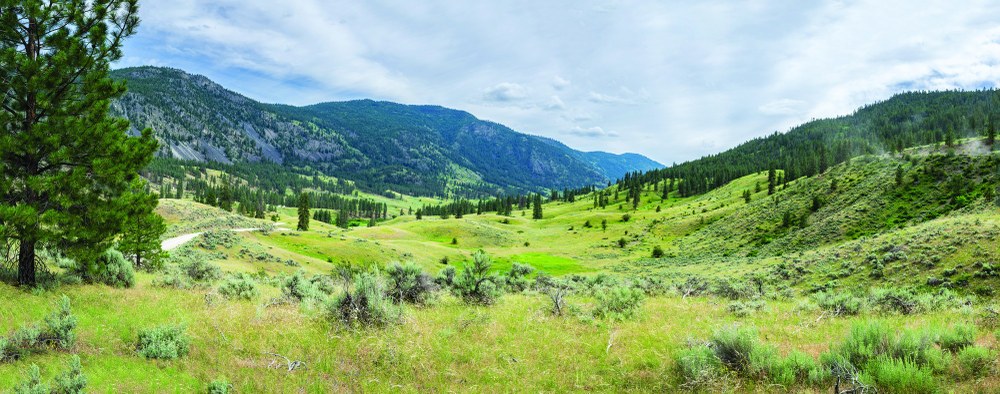
North, the hill plunges over 600 feet. South, it drops a similar elevation in increments. The hilltop is maybe a hundred feet wide, flat, and stretches a hundred yards or more perpendicular to the valley’s western wall before descending in stair steps to the creek running north. My mind tries to comprehend time and what has happened to sculpt the amazing configuration of this valley.
Five Mountaineers friends have accompanied me to the Sinlahekin Valley in northcentral Washington to look for birds, flowers, trees, and butterflies, and to try to comprehend this landscape’s geological history. We are standing on a terminal moraine where, incredibly, the sand and gravel wall is deep enough to bury Seattle’s Space Needle.
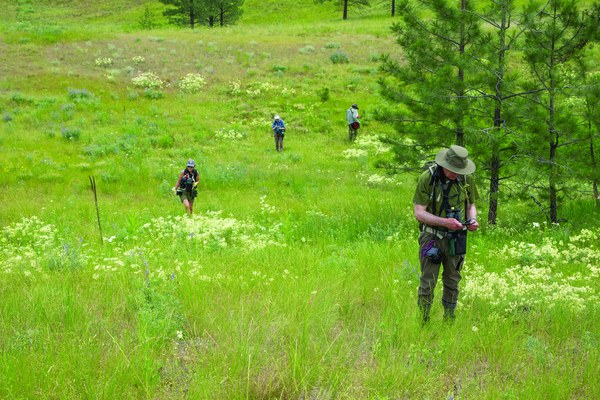 Mountaineers marveling at the natural world.
Mountaineers marveling at the natural world.
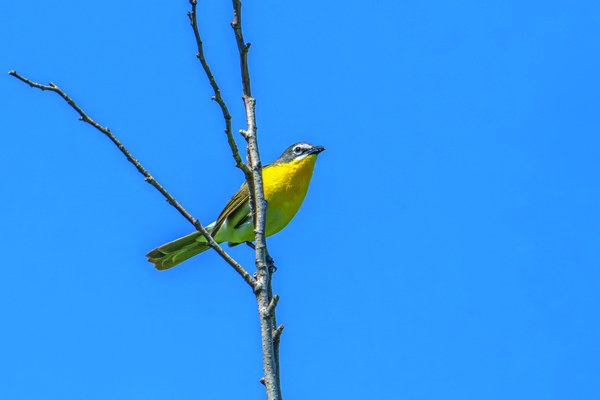 Yellow-breasted Chat.
Yellow-breasted Chat.
Before we begin our hike, I pose a question to the group while kicking the dirt mixture under our feet. “I give you a hundred people, all with shovels. How long will it take your crew to cover the Space Needle with sand and gravel?”
They all stare at me like I am crazy. “This mound was laid down by a Pleistocene glacier that sat just over there,” I say, pointing to the north of the moraine’s wall. “I don’t know for how long - a century, a thousand years, maybe two.”
These large, terminal moraines form when a glacier sits in one spot for a long time, moving forward at about the same speed it melts. Any rock, gravel, or sand in the ice, on its top, or dragged along is dumped at the glacier’s end, like a conveyor belt dropping wheat into a silo. The look of bewilderment on their faces is beautiful as they imagine how long it would take to do a glacier’s work. They, too, are trying to understand time and what it means.
I’d been to this valley three times before I knew about the terminal moraine. Embarrassing, but I tell this fact to the group anyway. I’d birded along Sinlahekin Creek and identified wildflowers, but never had an inkling that 15 to 20 millennia ago, a glacier had consumed this valley. A few years ago, I searched for geologic information on the Okanogan and discovered this spot was one of the best examples of a terminal moraine in Washington. A side lobe from the Cordilleran Ice Sheet used to extend down this valley, gradually pulling back until it reached where we now stand. It sat for a long time before retreating rapidly. What else was I missing?
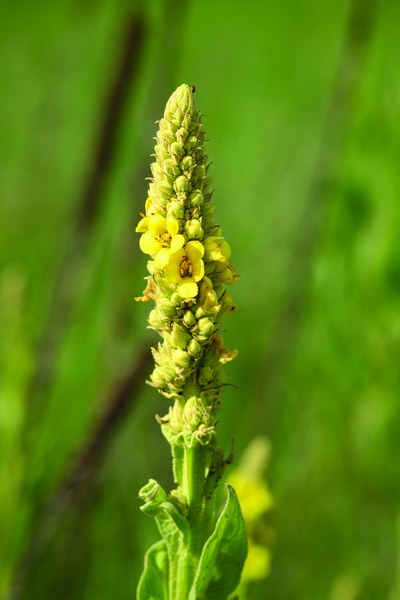 Wooly Mullein.
Wooly Mullein.
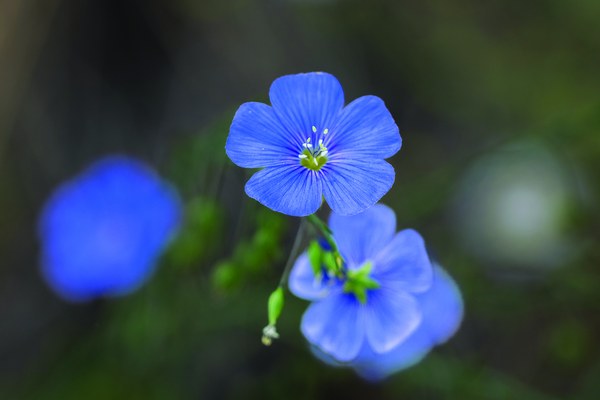 Lewis Flax.
Lewis Flax.
The language of the land
One of the fun things about organizing Mountaineers trips is the people that come along with their unique ways of looking at the world. This morning’s hike is enjoyable. I’ve done it several times, but see much more today because of all the eyes. We haven’t gone a quarter mile, and already encounter a large patch of Lewis flax. The blue flowers lazily sway in the light breeze. Their petals glisten in the filtered light. This member of Linaceae is native and widespread across North America.
Someone says, “Admiral,” and a three-inch butterfly with black, white, and reddish-tan wings flutters out of the flower patch to land on the sandy track. We cluster around it. Lewis flax is a perennial that blooms in June for a half-dozen or so years, while the adult Admiral butterfly lives for only a few weeks after it emerges from its chrysalis, just long enough to find a mate and lay eggs for the next generation. I look down at my feet, thinking about how I’ve just started my eighth decade.
What is it about time and how we think?
The group starts moseying down the track. A large mound rises a quarter mile further on the left, about 20 to 30 feet tall. Grasses and Ponderosa pines grow on its slope and top. The pines might be several centuries old, and the grasses are long-lived perennials, too. But that knoll is what I want us to contemplate. I've yet to find any geologic details on these mounds scattered along the valley, but my guess is that if we bore into them, we’d find they were composed of sand, small gravel, and no bedrock. Someone says, “Probably from a glacier.”
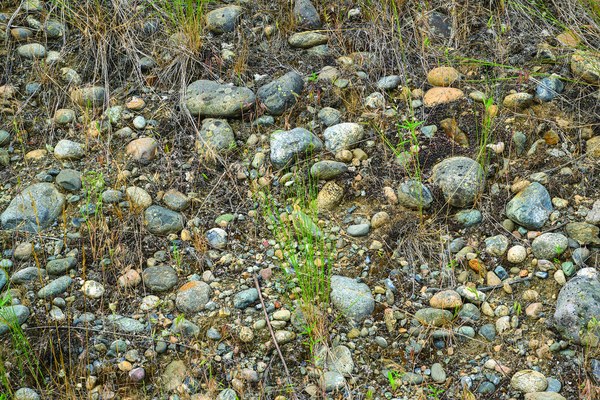 Glacial till along the edge of an esker.
Glacial till along the edge of an esker.
I don’t pretend to be a geologic expert, and all my compatriots have read about the geology of Washington. I suggest these mounds might either be drumlins or eskers. Both are formed by the interaction of meltwater and ice. Eskers tend to be long, thin ridges where a stream flows under the ice, gradually depositing sediments. Drumlins are also formed by subglacial waterways, either through deposition or erosion. Someone notes that drumlins tend to have a fan base in the direction of flow. We point at the terrain, thinking we see the fan. Someone else says these might have been created when pressurized water shot from under the ice like a giant fire hose, taking with it any sediments. Either way, we’re standing where a thick ice sheet would have risen above us some 20,000 years ago. Might we still be feeling the weight of that ice on our shoulders?
Hummingbirds and mountains
“Hummingbird,” comes from behind me and I hurry to the group. “It looks tiny, maybe a Calliope,” someone says. The bird sits on the extreme top of a willow along the creek. We creep through the grass to have a closer look. Calliopes are the smallest bird in the United States, about half the size of the incredibly small Bushtit. Males average between 2.3 and 2.7 grams, depending on where and when they are measured. A little over half a teaspoon of sugar weighs a similar amount. To me, these Calliope Hummingbirds seem like flying bumblebees more than birds.
Time is an enigma. According to Birds of the World, the oldest Calliope Hummingbirds were two females recaptured six years after banding. Most who reach breeding age, though, only have one or two summers to reproduce. Incredibly, these little birds also have a monumental migration route. In late summer, they head south through the Rocky Mountains to winter in southern Mexico, and in the spring they come north through the Sierras and the Cascades. Both trips are timed to catch flowers whose nectar fuels their efforts. To think, a living thing that weighs only half a teaspoon of sugar can fly two to five thousand miles on its fall and spring jaunts. Sure, they don’t do it all at once, but over several weeks or months, stopping to feed along the way. Still, I’d never make it that far in those time frames.
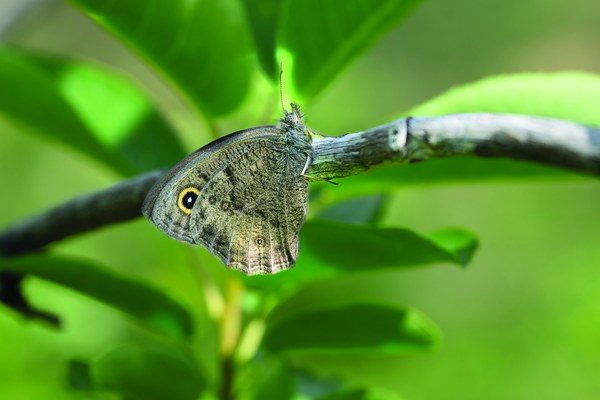 Common Wood Nymph.
Common Wood Nymph.
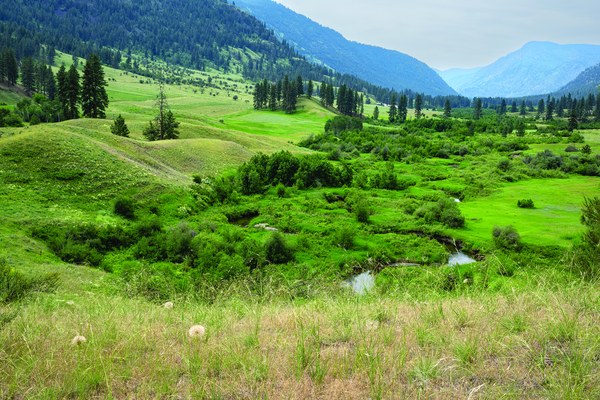 The Sinlahekin Valley.
The Sinlahekin Valley.
Thirty minutes later, I climb a knoll covered with Ponderosa pines and turn to look. My group is divided in two. A quarter mile back, three people cluster around some flowers. They’re looking at a butterfly, I guess, by how they point. Two others kneel with their field guides, checking a flower. I look back and forth at the knoll where I stand. This rise is different from the previous one: more perpendicular to the valley and with a similar bulge from the other side of the creek. Maybe this is a small moraine where the glacier only sat briefly, or perhaps pulled back and pushed forward, plowing up this mound. The creek may have carved through it after the ice left.
The valley here grabs my attention. Glaciers shaped this land 10s of millennia ago, but the valley formation itself is much older, shaped 100s of millions of years ago (MYA). Two-hundred MYA, the west coast of North America was east of here, near Spokane, Washington. Over the next several 10s of MYA, the Pacific Crust and the islands on it didn’t subduct under the North American Plate with continental drift but rather accreted to it, extending the coastline west.
The underlying rocks here are part of the Intermontane Belt, the terrane that accreted during the Jurassic. Still, this valley was influenced by the next terrane, the Insular Belt, that arrived with continental drift. Starting in the middle of the Cretaceous, about 130 MYA, the Insular Belt began to accrete, forming the North Cascades. The collision and subduction caused magma to rise into the Intermontane Belt, forming the Okanogan Highlands. Large volcanos grew, uplifting the metamorphic rocks of the Intermontane. At some point, some of those metamorphic rocks slid off the top and to the west. The valley’s walls in the Sinlahekin are parts of those slides. These cliffs are tall, rising several thousand feet, almost vertically. They were once twenty or more miles east of where we stand before they slid down. I found nothing that says how fast they slid; maybe it took millions of years. It is mind-boggling. Everything looks solid, unchanging in our lifespan.
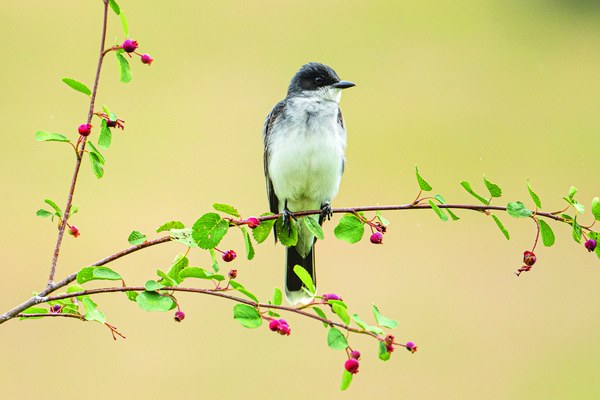 Eastern Kingbird.
Eastern Kingbird.
Cherishing time
Our hike takes longer than expected. It is only four miles, but at 1pm we still have a half-mile to go, and we’ve been at it for more than four hours. Worse, I had told everyone they didn’t need to bring their lunch. That’s a naturalist hike for you; so many things to study. We measure our trips in hours per mile, rather than the reverse. There is time again. I recall a saying by Hermann Hesse, “Little joys.”
I look down from a small ridge. Two from our group are entering a quaking aspen grove. The clump of trees extends for several acres, hundreds of trunks rising into the sky, their small greenish-yellow leaves fluttering in the light breeze. Aspens reproduce readily by sprouting from their root system. Sometimes these groves are clones of a single individual tree, making them all genetically identical. I raise my binoculars to study the forest, marveling at the ripple of leaves. Generally, a single trunk only lives up to 150 years, but the grove can commonly be 10,000 years old. One grove in Utah is estimated to be 80,000 years old. For a living organism, this seems almost immortal. Perhaps this grove started soon after the ice pulled back and has lived here ever since. These trees make me think of my granddaughter, only two months old. How much of her life will I be part of? Might I be blessed to see her graduate high school or college? At 71 now, every minute is special.
“Chipping Sparrow,” someone calls, bringing my attention back to the dappled light of some conifers. Two young birds perch in a Douglas fir. Their plumage shows they have just hatched this summer. They look at us, then flick down the hill to the north into the forest. Hermann Hesse would have told us to cherish every second of this day and would have complimented us on never hurrying.
This article originally appeared in our spring 2024 issue of Mountaineer magazine. To view the original article in magazine form and read more stories from our publication, visit our magazine archive.
 Thomas Bancroft
Thomas Bancroft